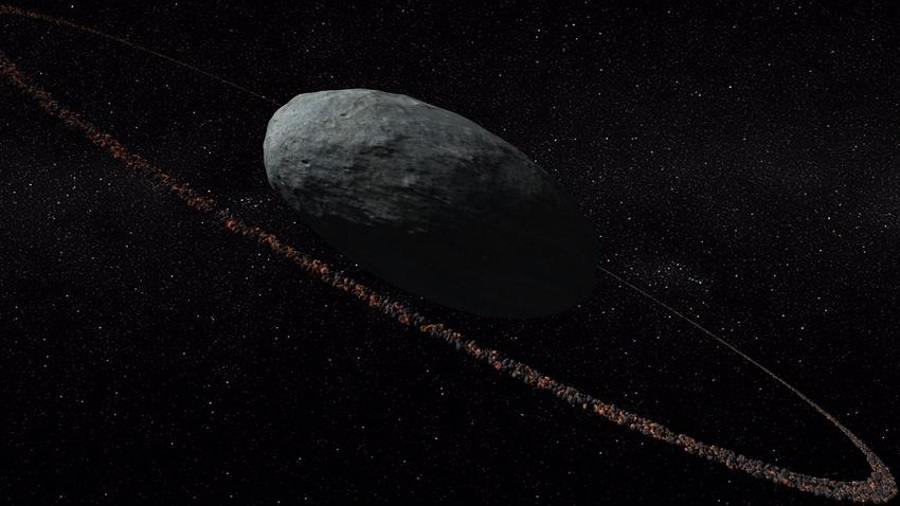Astronomers believe there’s another dwarf planet surrounded by objects orbiting in the space. This week, researchers said that the egg-shaped Haumea – one of the four dwarf planets in our Solar System, way beyond Neptune – is orbited by a bunch of material roughly 43 miles in width. It seems that scientists keep discovering other objects – and not planets – that are being rounded by rings.
This is the third time that scientists discover another object orbited by material in recent years. According to the study published Wednesday in the journal Nature, there is a collection of icy dwarf planets called trans-Neptunian objects, or TNOs. And for some reason, a significant part of them have rings.
The paper also suggests that Haumea might not be as small as we think. In fact, it might be taken out of the “dwarf planets list” that the astronomers composed.

On Jan. 21, 2017, Haumea passed in front of a distant star – a process called occultation by scientists. At that moment, using 12 telescopes from 10 different laboratories, the researchers could see that the dwarf planet was joined with other materials.
MIT and the South African Astronomical Observatory in Cape Town astronomer, who had no involvement in the research, Amanda Sickafoose, said that they expect another Astros near to the zone surrounded by large rings.
“In 2014 we discovered that a very small body in the Centaurs region (an area of small celestial bodies between the asteroid belt and Neptune) had a ring and at that time it seemed to be a very weird thing,” said José Ortiz, the study lead author and head of the Instituto de Astrofísica de Andalucía in Spain, according to USA Today. “We didn’t expect to find a ring around Haumea, but we were not too surprised either.”
In that same study, astronomers suggested that other two dwarf planets may also be surrounded by rings. Scientists said that they would put another eye over Chariklo and Chiron, located between Saturn and Uranus.
“There are different possible explanations for the formation of the ring; it may have originated in a collision with another object, or in the dispersal of surface material due to the planet’s high rotational speed,” Ortiz said.
Haumea, named after a goddess, gets close to the Sun
Haumea is one of the fastest objects when talking about the speed any planet takes to rotate. This dwarf planet takes only four hours to make one spin. However, it requires many Earth-years to orbit the Sun: 284.
The dwarf planet got its name after the Hawaiian goddess of childbirth and fertility, according to NASA. Haumea also has two moons, Hi’iaka and Namaka
Considering that Neptune is usually about 30 Astronomical Units (UN), Haumea could get close to the Sun. At its nearest point, the dwarf planet reaches a distance of 35 AU. When it’s the furthest, it reaches 50 Au of distance.
Source: Nature
